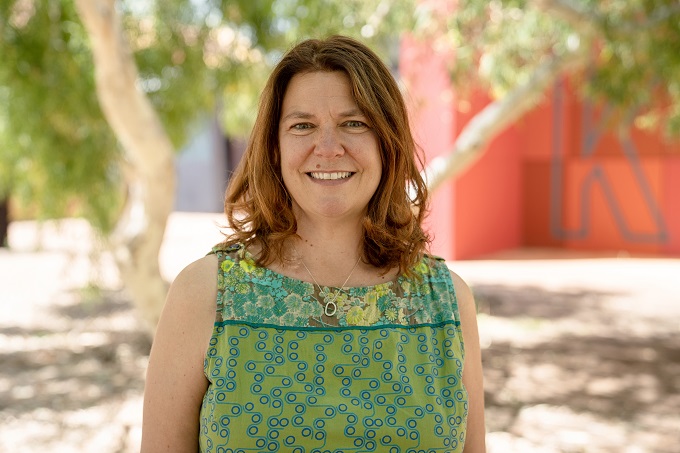
A video of parents passionately objecting to a decision by Sydney’s Newington College to transition to co-ed went viral earlier this year.
Through tears, Newington College parents spoke to the media about the “catastrophic” decision to start admitting girls into the school from 2028. Newington has a 160-year history as a boys-only college, and many said they feared this legacy will be eroded by the presence of female students. Others expressed concern that academic achievement would decline.
Read the latest print edition of School News HERE
Another elite Sydney all-boys institution, Cranbrook School, will begin admitting girls in Years 7 and 11 in 2026, with the whole senior school to be co-educational by 2029. Like Newington, there was some resistance among the school community and alumni. Younger alumni, though, supported the proposal, with about two dozen recent head prefects writing to the school council considering the co-ed proposal, saying private boys’ schools foster behaviours and attitudes that are no longer acceptable in broader society.
From 2025, Randwick Boys High School and Randwick Girls High School will become one coeducational school.
So why the shift from single-sex to co-ed? And does it really matter?
Co-ed schools by the numbers
Overwhelmingly, co-education is the dominant school model in Australia, with less than four percent of the nation’s more than 9500 schools being single-sex.
Of the 4 million students enrolled in primary and secondary schools, single-sex schools educate just 284,000. Most of Australia’s single-sex schools are in major cities, and nearly half of those are in New South Wales. Secondary education facilities account for 86 percent of single-sex schools, and 85 percent are non-government schools. The split between all-girls, and all-boys is fairly even, with the former making up 54 percent of students in single-sex schools.
Single-sex schools do remain the preferred choice for some parents and students for a variety of reasons. And while recent media attention has highlighted schools planning to convert to a co-educational model, Loreto College Marryatville Principal Kylie McCullah says same-sex schools are still seeing strong enrolment numbers.
“While there is a widely promoted claim that there has been a significant shift towards co-education, the recent data does not support this belief,” Ms McCullah said.
“Over the last decade, there has indeed been a decline in the share of students educated in single-sex schools, however it has been very modest, from 7.2 percent in 2018 to 7 percent in 2022.
“It is also important to note that the absolute number has grown by 11,000 students, with enrolment growth greater in girls’ schools than boys’ schools.”
Why the shift?
Individual schools will have distinct reasons for transitioning to co-ed, and will manage the change in their own way. Budget considerations, student outcomes, and future planning, though, are likely common factors in many schools’ decision-making process.
Of course, moving away from a single-sex model increases the potential enrolment pool, and in turn may boost enrolments. This can lead to more funding for the school, particularly if enrolments have not been full in recent years. Students may benefit from this funding, with improved facilities and resources.
An increased and more diverse student population can also extend academic opportunities. Some single-sex schools find it challenging to offer a complete range of subjects, including varied STEM disciplines, as well as visual and performing arts, and hospitality. Low student interest in these subjects may mean a school is unable to resource them, and so they are not offered for students. More student enrolments and the addition of the opposite sex may see interest in all subjects reach a level where including them in the school curriculum is sustainable.
And for some families, choosing a co-ed school is a matter of convenience. Having both boy and girl children at the one institution can alleviate the pressure on busy parents, juggling school events, extra-curricular activities, and regular school attendance. Building community and strong relationships can also be made easier, as parents with more than one child, of different genders, can get to know the school, staff and other parents well.

Academic outcomes
When it comes to academic advantages for students attending either model of school, the research varies.
Recent insights from David Curtis, Adjunct Associate Professor at the College of Education, Psychology and Social Work, Flinders University, suggest the school type may have negligible impact on student literacy rates.
Analysing data from the national Programme for International Student Assessment (PISA), Prof Curtis found that the academic performance gap between genders in reading literacy remained, irrespective of school type. By Year 10, boys lag almost three terms behind girls, a disparity that persists whether students attend single-sex or coeducational schools.
However, in mathematics and science subjects, school type does appear to make an impact- particularly for girls. Recent HSC data shows that girls’ involvement in higher-level maths is steadily declining, yet data from the Victorian Certificate for Education shows that girls at single-sex schools are 85 percent more likely to take advanced mathematics than girls in co-ed schools.
They are also 79 percent more likely to study chemistry, 68 percent more likely to take intermediate mathematics, and 47 percent more likely to study physics.
Another study found that although just 22 percent of female students in New South Wales attended a single-sex school, 40 percent of female engineering students at the University of Technology in Sydney were from all girls’ secondary schools.

Social and emotional benefits
While academic achievements and outcomes often centre the debate surrounding single-sex or co-education, the true benefits may lay in students’ social and emotional development.
“Some of the benefits pertaining to all-girls schools that I have witnessed at Loreto include increased confidence and participation in class and improved leadership skills,” Ms McCullah said.
“Additionally, girls are provided opportunities to take on leadership roles and participate in activities that are not necessarily associated with their gender without fear of judgement.
“All-girls schools offer specialised learning environments catering to specific needs of girls while at the same time encouraging gender-neutral interests.”
There is research to support Ms McCullah’s observations. A recent study from the University of Queensland found that girls leaving single-sex schools were more confident than those leaving co-ed schools.
The report, commissioned by the Alliance of Girls’ Schools Australasia, was conducted using OECD data. It found girls from single-sex schools reported a positive difference on 227 out of 314 measures, or 72 percent. These include higher scores and more confidence in science classes, better academic engagement and a greater sense of school belonging than girls at co-ed schools.
Girls who attended single-sex schools also reported a higher intention of completing a degree or doctorate – 69 percent at single-sex schools intend to go on to tertiary education compared to 51 percent of co-ed girls.
Alternatively, advocates of the co-ed experience point to how co-ed schools offer a parallel to the real world, preparing them to be better equipped to work with people outside their own demographics. There is also literature that suggests that co-educational environments may be beneficial for boys.
“There is a small but noticeable trend of single-sex schools converting or merging into co-ed schools, most of these examples are of boys schools,” Ms McCullah said.
“Part of the reason is that the co-educational environment seems to favour boys more than girls. Some research suggests that boys may do better in co-ed, and some educators go as far as to suggest that girls can be a positive influence on boys in co-ed schools, though this is often to the detriment to their own learning.”
Additionally, single-sex schools may provide a safer culture for young women, with a recent study of South Australian schoolchildren aged 11 to 19, revealing that sexism and gender stereotyping remains prevalent in modern classrooms.
The study by Flinders University found that girls experience significantly higher rates of sex-based harassment in co-ed schools. Adjunct Professor Roslyn Shute’s research established that boy-to-girl harassment is the most frequent type of sex-based harassment in co-educational schools.
Boys are far more likely than girls to be the perpetrators of sexually-toned bullying, victimising mainly girls, and, to a lesser extent, boys who fall outside of stereotypical gender roles. An analysis of Australian and New Zealand PISA data found that the rate of bullying of girls in single-sex schools is markedly lower than for girls in co-educational schools.
While the debate around single-sex versus co-educational school models is likely to continue, and more single-sex schools look to move into a co-educational model, the true marker for student success may lie outside school type altogether.
A striking finding from the PISA data insights found that socio-economic status has a significant impact on educational achievement. The findings found that students from low-SES backgrounds in both single-sex and co-educational settings are significantly disadvantaged, trailing their peers from higher-SES backgrounds by about two years in learning.
These findings highlight the need for a broader focus on socio-economic factors in education, beyond the scope of school type.
Despite the diversity of opinions and research on the topic, the choice of school remains an individual one.
“One of the most important parenting decisions is the choice of school, and Australian parents enjoy the freedom to choose from a range of education options,” Ms McCullah explained.
“It is important to consider individual student needs and preferences to make the right decision.”
Single-sex, co-ed, public or private – the discussion is sure to consider.







